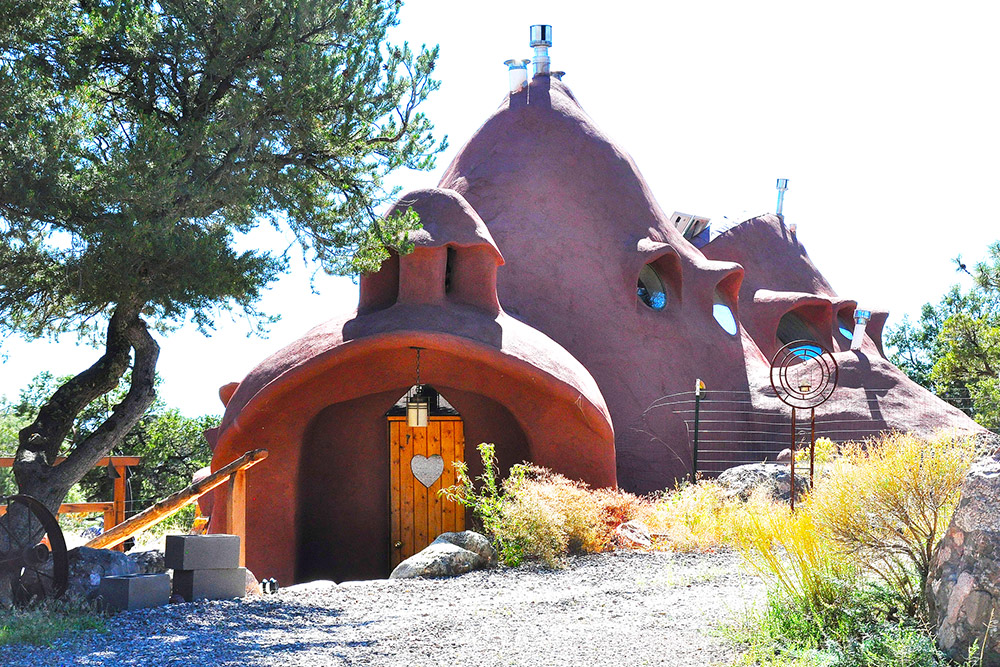While they’re still considered outside of the mainstream, alternative homes are becoming more popular, for lots of good reasons. Small-space houses (usually under 1,000 square feet) and greener homes built from natural materials (or that use efficient systems such as solar or geothermal heating) are usually better for the environment, as well as the homeowners’ bottom line.
But banks and regulatory markets have been slow to catch on, and no financial products yet exist that specifically cater to this market.
Why? To begin with, to provide an appraisal for mortgage lending, banks need to find local, comparable homes. If few or no such properties exist, it can be tough to get a lender to finance your funky new pad.
Why a traditional mortgage won’t do
“These kinds of loans are a round peg for the banks’ square hole,” says Kai Rostcheck, a digital marketing strategist and the founder of Tiny House Lending, a service that connects consumers to a network of lenders. “Banks want calculated risks,” he says, and alternative homes — tiny or otherwise — present one that they can’t interpret yet.
Why you need a non-traditional loan
The average cost of new construction in the U.S. is $95 per square foot; tiny homes and eco-castles aren’t necessarily an exception. While some projects — earthship, cob, or strawbale structures — may cost less, even a DIY project can easily run up $10,000 for materials. Eco-friendly projects, a passive solar or geothermal home, for example, may cost as much or more than otherwise comparable properties
Despite these hurdles, it is possible to finance an alternative home. If you’re ready to make the leap, here’s where to start.
1. How much will you DIY?
Obviously, building your tiny house, earth dome, or straw-bale home on your own will be the least expensive option. If you’re going the DIY route, you’ll be investing your own time and labor, and that can save you bundles.
Trevor Reichman, a musician who resides in rural Texas in a 250-square-foot earth-dome structure that he built himself, advises DIYers to avoid financing altogether. “About 90% of the structure is built from free earth materials,” says Reichman, who estimates he spent less than $1,000 on construction.
“A bank would never finance a structure like this and that is a blessing in disguise,” he adds. “In lieu of raising money, I solicited help with labor instead.”
Of course, not every DIY project will be this low-cost, but it pays to think about how hands-on you want to be.
2. Understand your location, location, location
In many cases, solar-water heating, reclaimed timber, or other eco-upgrades can be purchased with money from a traditional loan. However, to be approved for upgrades such as solar, wind, or geothermal power in a construction loan, these energy sources will probably need to be common in your area.
If they are, consider using a local bank, which might understand the community better. In certain areas of New Mexico, for example, local banks will finance adobe homes, while a national lender might find that too unconventional.
3. Do your own legwork
Don’t be surprised if you can get a traditional mortgage for the land, but can’t get a construction loan. If a lender tells you there are no comparable houses in your neighborhood, go out and try to find them yourself.
Are there log homes, pre-fabs, or passive houses in the area? Anything beyond a typical stick-frame building could potentially be considered. Don’t take no for an answer, and success will be knocking on your unconventional front door.
4. Shop for a personal or portfolio loan
There are, of course, all kinds of loans available for things that aren’t land-based, such as auto or boat loans. If you can secure a personal loan, there’s a good chance you can use it to build your home.Personal loans don’t require assets or savings as collateral; instead, the amount you can borrow and interest rate are determined by factors including your credit score, debt, and income.
Another option is portfolio lenders, who loan their own money – that is, they don’t resell loans to the secondary market, like the vast majority of lenders do. That means they aren’t bound by the same strict criteria, leaving them free to consider your wild (but well planned, of course) dreams.
5. Consider private funding
Borrowing from friends or family comes with its own complications but also has rewards, since the terms of the agreement are up to the involved parties. Or, if you own other properties, you could tap into that equity to fund your new alternative home. If you think you’ve got a unique project and great social networking chops, you might try crowdfunding your project on a site like Kickstarter.
6. Research special options
If you’re looking for a turn-key pad, some pre-fab manufacturers offer their own financing for move-in ready or built-to-suit homes. Or, if you’re building or buying a very small home that’s going to live on a flatbed and wheels, you may be able to apply for an RV loan through a credit union.
7. Keep your credit score up
At the end of the day, any loan you apply for is going to come down to your credit profile. Keep yours looking good, and you’ve got a decent shot at getting the loan you want at a rate you hope for.
8. Hang in there — you’re an early adopter
Tracking down the right loan might tricky. Remind yourself that you’re ahead of the curve.
As more cities and towns adopt alternative building codes, banks will follow suit. This market, says Rostcheck, is “about shifting economics and correlating values. When the right financial products get into the hands of forward-looking home buyers and builders, he says, “It’s going to explode.”


